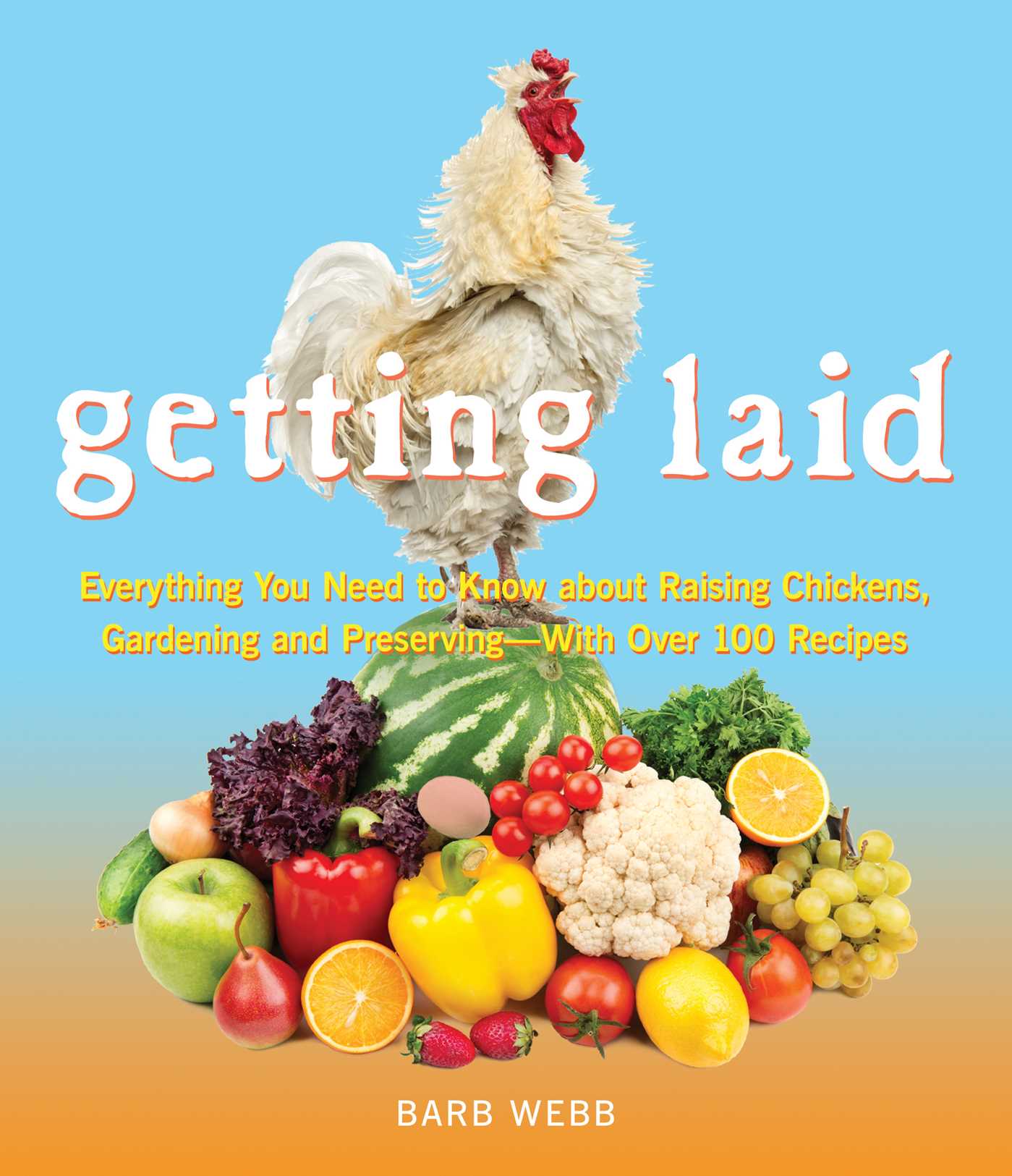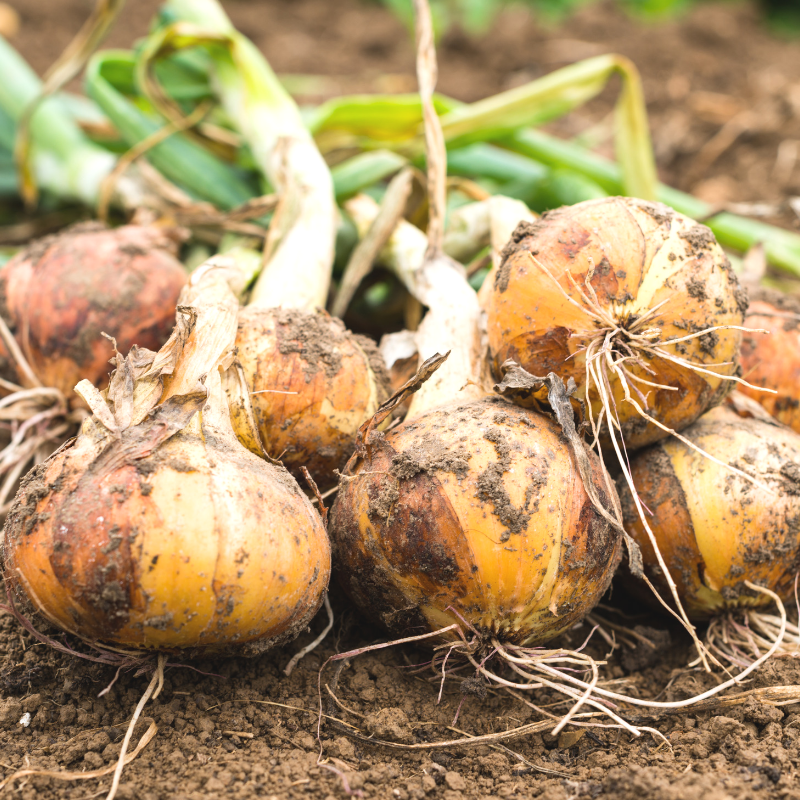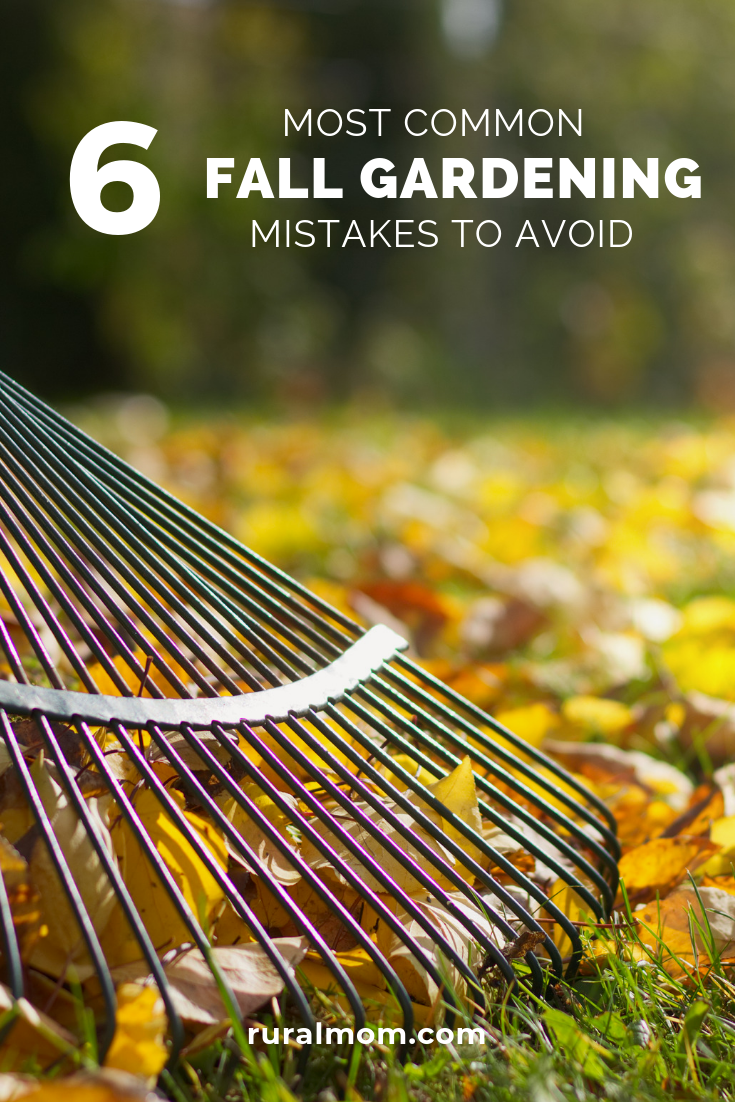It’s back-to-school time already and fall is just around the corner. I can already see the leaves turning in Kentucky. Time to start prepping your fall gardening!
For most of us in the US, fall represents a time during which our gardens wind down and prepare to enter dormancy. Some plants die out altogether while others slow or halt their growth cycles as they prepare for winter.
Fall is not just a time for putting the garden to bed. It’s time for preparing plants for a winter rest period and ensuring that they they have the protection they need to be able to grow more vigorously the following spring.
Most fall gardening mistakes we make happen because we aren’t exactly sure about what must be done, what can be done, or what shouldn’t be done. Have you made any of the most common fall gardening mistakes?
Mistake #1 – Not Raking Leaves
Leaving the leaves on grass can be a big mistake over the winter. Between the weight of heavy snow and foot traffic, grass can easily get matted down.
Worse than that, by not raking the leaves, you prevent the grass from being able to breathe. Without adequate air flow, the environment is ripe for the growth of all sorts of fungal and bacterial diseases – both of which can kill the grass and contaminate the soil.
Mistake #2 – Not Watering Before A Hard Freeze
One way to prepare plants for winter and to protect them is by watering them thoroughly before a hard freeze. The temperature beneath the soil is going to be more consistent than the air temperature above the soil.
Plants can take water as they need it when the soil is able to absorb the water adequately. Without it, those plants will lose that insulation that the water helps provide.
Mistake #3 – Planting Spring Bulbs Too Late
Fall is the best time to plant your spring blooming bulbs. The most important thing to know about planting your spring bulbs is that you need to do it early enough that the bulbs can establish a reasonably sized root system before you get a hard freeze.
Spring blooming bulbs will draw nourishment into the bulbs through the root system. Without a decent sized root system, this won’t happen. Naturally, this may impact how successfully your bulbs bloom the following spring.
Mistake #4 – Pruning Plants Too Soon
Many people are hasty to cut off “dead growth” from plants but it’s often better to wait. Just because the leaves have fallen off the plant and the stems are bare, doesn’t mean it’s all dead growth now. For many plants, they are merely dormant. If you leave them alone, as soon as they come out of dormancy the following spring, they will leaf out all over the place, including those branches that you might have thought were dead.
Be sure to read up on your plants before pruning them in the fall. There are some that do benefit from fall pruning such as Delphinium, Gardenia, and Pomegranate.
Mistake #5 – Not Cleaning Up The Flower Beds
Another common mistake that people make is that they don’t clean up the flower or vegetable garden beds during the fall. You will want to pull up old vegetable plants because you don’t want them to drop seeds everywhere. This will make it impossible to properly rotate the placement of crops the following season.
You’ll also want to remove things like cages, trellises, row markers, and anything else. This helps preserve them for re-use next spring.
If you want to add a wealth of nutrients to your vegetable garden beds, plant a winter cover crop such as rye. You can till this under the following spring and benefit from the nutrients of this “green manure.”
Mistake #6 – Not Digging Up Non-Hardy Bulbs
Many gardeners like to plant tropical flowering plants like canna lilies. If you don’t live in a zone where these things are hardy, you can’t leave them in the ground over the winter. They need to be dug up, cleaned, allowed to dry. Then it’s best to pack in peat moss or shredded newspaper and store in a cool dark and dry place.
The most important thing to do is to make sure your plants that need the winter cold to jump start their growth cycle are planted at the proper time. You will also want to make sure that you clean out your flower beds and remove dead plant growth so that it doesn’t become a place in which diseases can grow or lie dormant.
By taking the necessary precautions, cleaning things up and doing the fall planting at the proper time, you will eliminate the need to clean up the mess in the spring. This will help to make the start of your spring gardening season a satisfying and productive experience.




